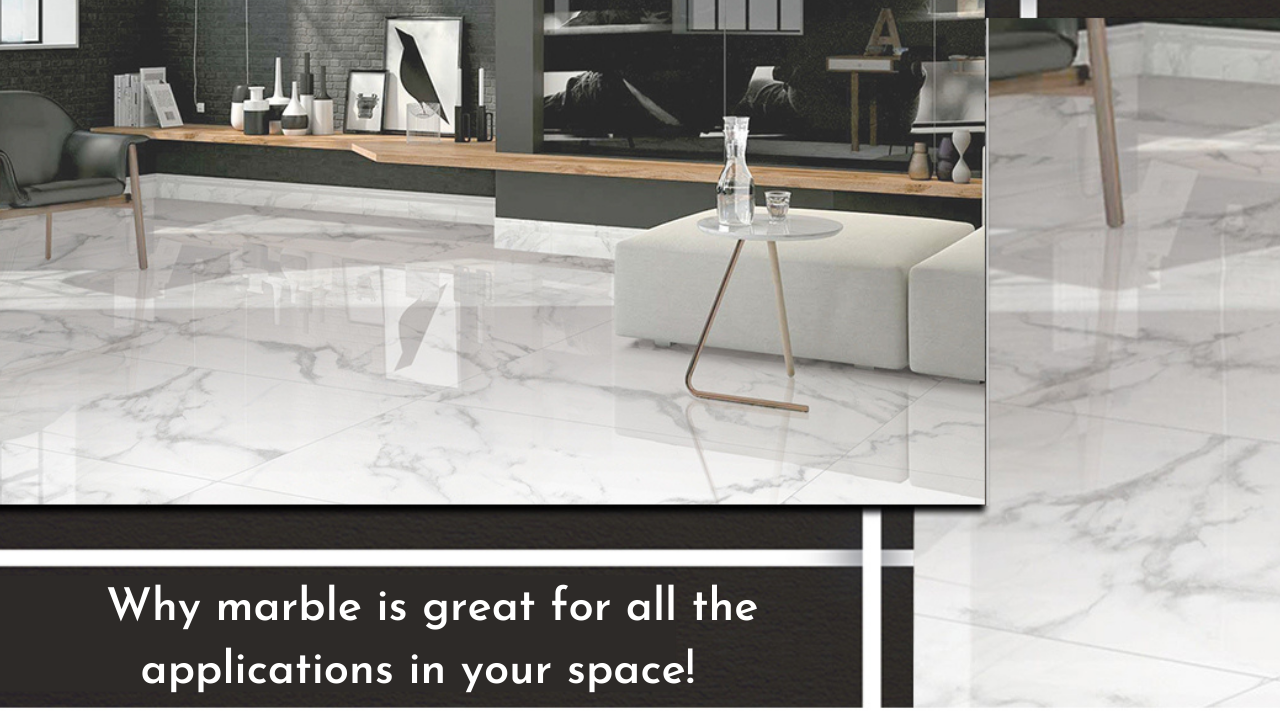
Marble and granite application has always been linked with luxury and opulence. It’s a material that’s graced kings’ and queens’ palaces, as well as being utilized in some of the greatest works of art and architecture ever created. When put in a kitchen, it may provide a feeling of refinement that permeates the entire ambiance of the space.
However, there is always a fix between “Marble vs. Granite.” It is a debate that has been going on for a long time now! Choosing the proper stone is one of the most challenging yet essential decisions for homeowners. So, when it comes to remodelling the space, this is typically the most apparent confusion.
And the confusion does not end here! Even when you settle on one choice, you will have other confessions like going for makrana marble, morwad white, or grey marble! That is why most individuals are getting confused when it comes to selecting natural stones.
Marble and granite are both appealing and stunning, and they may provide a nice aesthetic aspect to your house. When it comes to the applicability, there is another cycle of questions. Is it appropriate to use marble in the kitchen? Can I use it on the bathroom backsplash, etc.!
The famous designers say that these are some of the most frequently asked questions! You’ve been fantasizing about a new space for years, and you’re all about the modern trend of employing stone countertops instead of laminate. When you start looking at the numerous countertop alternatives for your kitchen renovation, you’ll almost certainly be drawn to makrana marble, granite, or quartz.
But are you aware of the pros and cons of all? The maintenance required, and all the necessary precautions?
Perhaps, only a few people are aware of so much detailing. So, before settling on any decision, it is good to take a deep peep at all the details.
When it comes to marble, here’s the genuine deal:
You may utilize marble in the kitchen if you’re willing to put in a little extra effort in terms of care or an adjustment in mindset when it comes to the flaws that come with everyday living. Yes, you can get those white makrana marble kitchen countertops you’ve always wanted.
Important Characteristics:
Marble’s inherent properties make it ideal and most suitable stone for sculpting. It has a Mohs hardness number of approximately 3. This is why it is considered a “soft” stone. Probably, this explains its widespread usage in arts and sculptures.
It does not scratch and scuffs easily. This is a better feature than granite or quartz. Therefore, this makes it a better stone, particularly for the kitchen.
Because marble is a porous stone, it is more susceptible to stains from solid cleaning agents or acidic substances. When we discuss marble care, we’ll get into more detail regarding these concerns.
Makrana Marble is generally mined in huge slabs right off the mountains. Since it occurs in vast quantities, it can be hundreds of feet thick, making it suitable for uses such as countertops and backsplashes
Every marble piece has got different design and hues. This is because it is best in its original formation. So, if you consider a backsplash and tabletop made of marble, it is one-of-a-kind material. Since each slab is distinct and there is a significant degree of variance from one section to the other, it can add a different dimension to every piece in the house.
The brilliant white marble provides a new, clean gleam. This will be sufficient to brighten up an area with little natural light. And the kitchen, white and light-coloured marbles lighten up every space where they are put to use.
Now that you know about the pros, you should know more about its designs:
Marble Designs:
Although white marble is the most well-known color in the world of natural stone, it is available in various colors, ranging from vibrant Forest Green to calm Tropical Blue to earthy Sequoia.
There are two main styles of traditional whites: Makrana marble and Carrara.
Carrara:
Carrara marble, usually the more affordable alternative, has delicate veining that gives the stone grey and bright tones. It has a uniform look with minor variations. However, there are slabs with more spectacular veins.
Makrana white:
There are various sub-categories to this marble. As its name suggests, it is found more prominently in the makrana belt of Rajasthan. Also, this is one of the marbles that can be put to almost every use. Besides, there are multiple finishes of marble-like:
Polished Finish:
Marble may be polished to get that distinctive sheen that accentuates the stone’s whiteness and luster. This is the most common choice since it provides the stone a more elegant look while being easier to clean.
Leathered Finish:
Leathering is a popular method to improve marble appearance. Mainly, it offers makrana marble a more natural feel, with varied textures that simulate natural stone shine- ideal for emphasizing the straight-from-the-earth look. Leathered stone, like honed stone, hides watermarks, fingerprints, & scratches. The small gaps enable liquids to accumulate, thereby increasing the risk of staining.
Honed Marble:
While honed counters hide scratches, they also make the stone more porous and stain-prone, necessitating more regular re-sealing.
Honed marble has a matte surface that ranges from entirely flat to semi-matte, making it more forgiving of scuffs and scratches. It also “tones down” the marble’s feel, making it softer and warmer.
These are a few of the best practices that can improve the appearance of your marble surfaces, irrespective of the color and variant you choose. However, there are still maintenance tips that need to be followed regularly to keep its shine intact.
Makrana marble is one of the most popular and preferred options available for your space that comes with multiple applications. It is collected in large slabs from the mountain’s belly, then cut down and polished into the individual tiles and mosaic sheets utilized in typical building procedures, such as floor and wall tiles and countertop slabs.
Hopefully, you have gained valuable information for all the time you have given to read this blog!


